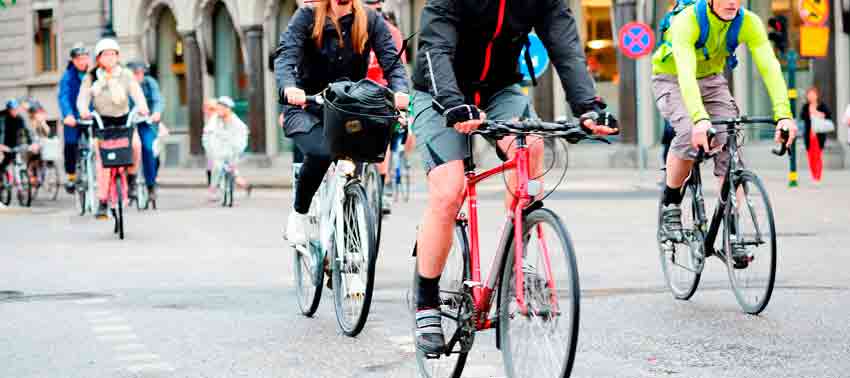Crowdsourcing cycling data: 800 cyclists in Gothenburg help to collect data about how they cycle
In order to better plan for cyclists, we need to have data on where and when they travel as well as who they are. Today, there is almost no data on cyclists. The small amount of data that exists comes from traditional travel surveys as well as flow measurements at specific points.

Smartphones provide a new way to collect cyclist data – GPS positioning collected through apps on mobile phones provide a new way to collect data. But what do we need to know about the individuals? In what way is the crowdsourced data biased? What useful things can we do with the data?
Research project on crowdsourced bicycle data
To answer these questions, Trivector is conducting research funded by the Swedish Transport Administration in which around 800 participants are collecting cycling data in the city of Gothenburg. Participants can either use the travel survey app TRavelVU or they can donate data by connecting their STRAVA or Moves account to the research project. Data has been collected in September and October of this year.
Before the data collection, Trivector held two workshops to help design the pilot data collection. The first workshop was held with city representatives and other data users about what needs were required from cycling data, while the second was held with transport statistics experts about how to design the data collection in order to get something meaningful from the data.
Possibility of using crowdsourced GPS data in the future
The focus areas of the analysis include willingness of individuals to donate personal GPS data, quality of the collected data, areas in which the data can be used, cost of collecting data and representativity of the data. The city of Gothenburg is conducting a traditional paper mobility survey this autumn too which allows comparison between different methods. Some preliminary results show that for recruitment social media (facebook) and traditional media (local newspapers) are the largest source for respondents. Using direct marketing in the city (e.g. flyer attached to bike or person recruiting in town) were much less successful methods.
The expected advantages of using mobile phones for data collection include the possibility to see detailed route choices, which (signalised) crossings tend to be avoided, and whether average cycling speed depends on the type of cycling infrastructure (for example cycling in mixed traffic compared to dedicated cycle lanes). Having GPS data also helps to reduce the number of unreported trips as well as more accurately record their duration and specific route. Short (walking/cycling) trips are often forgotten when filling in paper surveys.
The results will support the development of new methods for collecting cycling data which can be used by other organisations interested in collecting cycling data. In 2018 the results and findings of the research will be presented and discussed at different conferences and published as a report.
Contact
If you have any questions, please contact Erik Stigell, 010-456 56 79.

